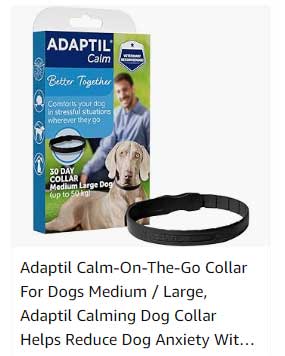As pet owners, we often focus on the joys of having a dog—playful antics, loyal companionship, and the unconditional love they provide.
However, it’s essential to recognize that dogs can also experience anxiety and depression, just like humans.
Understanding these conditions in our furry friends is crucial for ensuring their well-being and happiness.
In this article, we’ll explore the signs, causes, and possible solutions for dog anxiety and depression.
Signs of Dog Anxiety and Depression
Dogs communicate their feelings through behavior.
Recognizing the signs of anxiety and depression can help you intervene before the conditions worsen.
Common signs of anxiety in dogs include:
Excessive Barking or Howling:
This can indicate distress, especially when left alone.
Pacing or Restlessness:
An anxious dog may wander around, unable to settle down.
Destructive Behavior:
Chewing furniture or digging through trash can be signs of anxiety, particularly when it stems from boredom or separation issues.
Avoidance:
If your dog is hiding or trying to escape, it may be experiencing anxiety.
Changes in Appetite:
A dog that suddenly stops eating or overeats may be struggling with anxiety.
Physical Symptoms:
Excessive panting, trembling, or showing signs of physical discomfort can also indicate anxiety.
On the other hand, signs of depression in dogs include:
Withdrawal:
A depressed dog may lose interest in activities they used to love.
Lethargy:
If your pup seems more tired than usual or sleeps excessively, it could be a sign of depression.
Altered Sleeping Patterns:
Changes in sleep habits can indicate an emotional struggle.
Excessive Grooming:
Some dogs may groom themselves excessively, leading to skin issues as a result.
Changes in Vocalization:
While anxiety might cause increased vocalizations, depression might lead to a decrease.
Causes of Dog Anxiety and Depression
Several factors can contribute to a dog developing anxiety or depression:
1. Separation Anxiety:
Many dogs struggle when left alone, which can lead to excessive barking, destructive behaviors, or accidents in the house.
2. Changes in Environment:
Moving to a new home, a change in routine, or the introduction of new pets or family members can unsettle dogs.
3. Negative Experiences:
Traumatic events—such as abuse, accidents, or loud noises like fireworks—can lead to long-term anxiety.
4. Health Issues:
Sometimes, underlying health problems can manifest as behavioral issues.
Pain or discomfort can lead to mood changes.
5. Lack of Socialization:
Dogs that haven’t been adequately socialized may exhibit anxiety in unfamiliar situations or with new people and pets.
Solutions for Managing Dog Anxiety and Depression
If you notice signs of anxiety or depression in your dog, there are several ways to help:
1. Create a Safe Space:
Provide a comfortable area where your dog can retreat when feeling anxious.
This space should be quiet and filled with familiar items.
2. Maintain Routine:
Dogs thrive on routine, so keeping a consistent schedule for feeding, walks, and playtime fosters a sense of security.
3. Exercise and Enrichment:
Regular physical activity and mental stimulation can significantly improve your dog’s mood.
Engage in daily walks, play interactive games, and provide puzzle toys.
4. Training and Socialization:
Professional training can help address behavioral issues, while gradual socialization with other dogs and people can reduce anxiety.
5. Positive Reinforcement:
Reward your dog for calm behavior with treats and praise.
This approach can help them associate good experiences with situations that typically cause anxiety.
6. Consult a Veterinarian:
If your dog’s anxiety or depression seems severe, it’s important to seek professional advice.
A veterinarian may recommend behavioral therapy or medication as part of a treatment plan.
Conclusion
Caring for a dog with anxiety or depression can be challenging, but with patience, understanding, and the right strategies, you can help your furry friend feel secure and happy.
By recognizing the signs early and taking proactive steps, you can create a loving environment that supports your dog’s emotional health. Remember, a happy dog contributes to a happy home!










